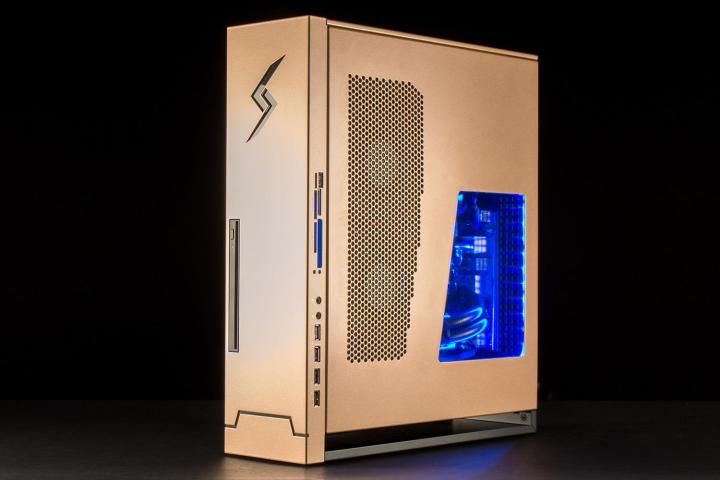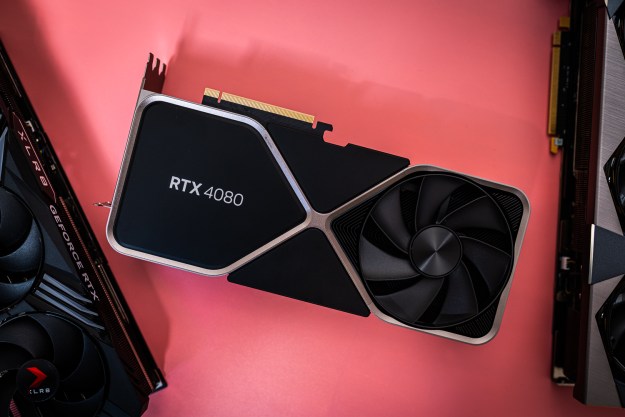
The GTX 980 and 970 are brand new additions to Nvidia’s graphics card lineup. They replace the 780Ti, 780, and 770 graphics cards. Before Nvidia recently released the GTX 980 and 970, the 780 Ti, 780, and 770 sat at the top of Nvidia’s single-GPU offerings.
Related: Nvidia GeForce GTX 980 review, specs, bench marked
Here’s a brief breakdown of each new graphics card.
GeForce GTX 980
The GeForce GTX 980 is powered by 2,048 CUDA cores, and sports a base clock of 1,126MHz, a boost clock of 1,216MHz, and a memory clock of 7,000MHz. The GTX 980 has 4GB of GDDR5 RAM, a memory bus of 256-bits, and memory bandwidth of 224GB/s. The 980 has a trio of DisplayPort connectors, an HDMI port, and a dual-link DVI port as well.
Related: Digital Storm Bolt II review
One of the most impressive aspects of the GTX 980 is the fact that you need a lot less power to run it compared to the 780Ti. The GeForce GTX 980 has a thermal design power (which is a measurement of power consumption) of 165-watts, while the 780Ti, which is the card that it’s replacing, has a TDP of 250 watts.
GeForce GTX 970
The GeForce GTX 970, which is a step below the 980, wields 1,664 CUDA cores, along with base and boost clocks of 1,050MHz, and 1,178MHz, respectively. Like the 980, the 970 also sports a 7,000MHz memory clock, and carries 4GB of GDDR5 RAM. That’s double what the Nvidia GeForce GTX 770 has (2GB). The 970 is the placement for the GTX 770.
The 970 features a 256-bit memory bus, and memory bandwidth of 224GB/s, just like the 770. Like the GTX 980, it has three DisplayPort connectors, along with single HDMI, and dual-link DVI ports.
The 970 is much more efficient from a power consumption standpoint than the 770 is. The GeForce GTX 970 has a TDP of only 145-watts, which is nearly 100-watts lower (230) than what the GTX 770 demands.
Possible Digital Storm GTX 980/970 configurations
We’ll now run through a few different Digital Storm configs so you can get an idea of how much you should expect to spend on a system equipped with a GTX 980 or 970 card.
We start with the Bolt II, which is among Digital Storm’s smaller desktops. With an Intel Core i5-4590 CPU, 8GB of RAM, a 120GB SSD, a 1TB hard drive, and a GTX 980, you’ll be shelling out $2,120. With a 970 in there, the price drops to $1,834.
An Apollo system with a similar specs sheet will run you $1,970 with a GTX 980 in it. Swapping it out with a 970 lowers the tag to $1,684. Meanwhile, a Digital Storm Virtue PC with a similar component roster will cost $1,887 with a GTX 980 in it. If you switch that out for a GTX 970, the price gets cut to $1,601.
You can’t get the GTX 980 or 970 with all of Digital Storm’s PCs though. For example, with the Vanquish II PC, you’re limited to older cards like the GTX 770. We expect that to eventually change, though.
If you just want to buy the Nvidia GeForce GTX 980 or 970 on their own from a site like Newegg, they’re going for roughly $549, and $329, respectively.
Editors' Recommendations
- Nvidia just made GeForce Now so much better
- Nvidia GeForce RTX 4070 vs. AMD Radeon RX 6950 XT: a close call
- We now know the eye-watering price of Nvidia’s RTX 4090 gaming laptops
- Nvidia at CES 2023: RTX 4090 mobile, 4070 Ti, GeForce Now updates
- The 5 worst Nvidia GPUs of all time



